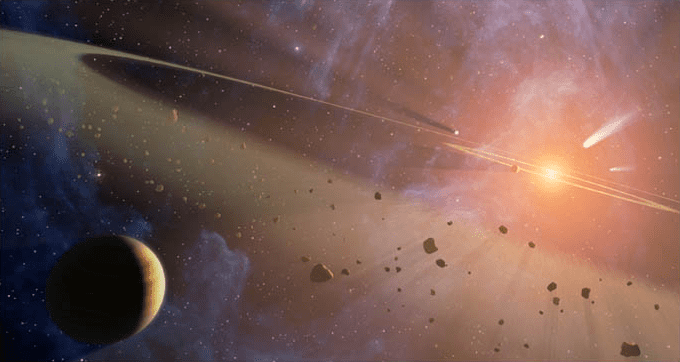
I have many interesting books in my library, among them James N. Gardner, Biocosm: The New Scientific Theory of Evolution: Intelligent Life is the Architect of the Universe (Makawao, Maui, HI: Inner Ocean, 2003).
James Gardner is a lawyer, a graduate of Yale Law School, as well as a former Supreme Court clerk and a former member of the Oregon State Senate.
So what qualifies him to write such a book?
Well, apparently he studied philosophy, complexity theory, and theoretical biology at Yale prior to entering law school. And he has published multiple articles in peer-reviewed journals such as Complexity and the Journal of the British Interplanetary Society. And, for what it’s worth, his book features a foreword from Dr. Seth Shostak, senior astronomer with the SETI Institute, as well as endorsements from Dr. Michael Shermer, the publisher of Skeptic magazine who was for many years until recently a monthly columnist for Scientific American and who was once my opponent in a nationally televised debate; from the Anglo-Australian theoretical physicist Professor Paul Davies; and from Sir Martin Rees, former president of both the Royal Astronomical Society and the Royal Society and, since 1995, Astronomer Royal of the United Kingdom.
So I thought that the book might deserve a look.
Here are three passages that I’ve extracted from the very first pages of Biocosm:
To echo the insightful phrase of Princeton astrophysicist Freeman Dyson, it is my contention that “mind and intelligence are woven into the fabric of our universe in a way that altogether surpasses our comprehension.” . . . The basic claim of this book is that the oddly life-friendly character of the fundamental physical laws and constants that prevail in our universe can be explained as the predictable outcome of natural processes — specifically the evolution of life and intelligence over tens of billions of years. (xxiii-xxiv)
These papers [out of which Biocosm grew] provide the foundation for a scientifically plausible version of the “strong anthropic principle” — the notion that the physical laws and constants of nature are cunningly structured in such a way as to coax the emergence of life and intelligence from inanimate matter. (xxiv)
an odd feature of cosmology that has intrigued me ever since I began studying philosophy and theoretical biology as an undergraduate at Yale: the strangely life-friendly quality of the physical laws and constants that prevail in our universe. (xxix)












